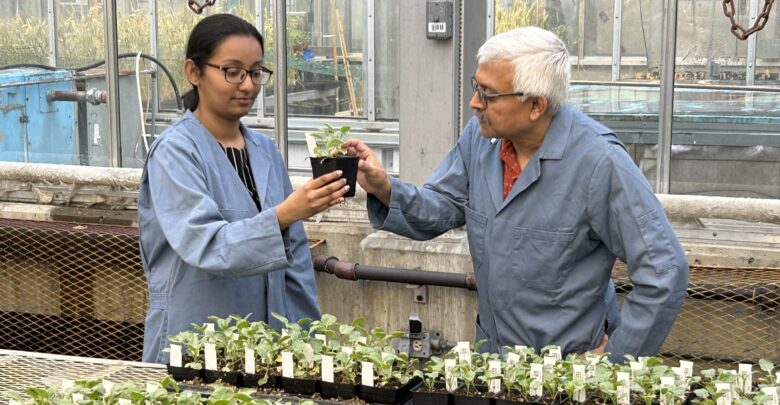 Supplied
SuppliedResearch from the University of Alberta has found that adding silicon to soil could help protect canola plants against a deadly disease called clubroot.
Clubroot is a soil-borne disease that infects the roots of canola plants. Once infected, the roots change shape, turning into the form of clubs. In club-form, the roots are unable to acquire nutrients from the soil, which causes the plant to die. Ananya Sarkar, a PhD candidate in plant science, conducted the study under Nat Kav’s supervision. Kav is a professor and associate dean of the faculty of agricultural, life, and environmental sciences.
As part of the research process, Kav and Sarkar grew and cultivated canola plants in a greenhouse. They gave some plants silicon in various concentrations. Then, they infected the plants with the clubroot pathogen.
“We observed significant reduction in disease in the presence of silicon. Then, we took it beyond that and we decided to investigate how silicon might be doing this,” Kav said.
“We found changes at the molecular level where it seems that the plant’s biochemistry is altered,” Kav says
According to Kav, research on using silicon as a plant protecting agent lacked information on protecting canola plants against clubroot. He added that because the disease has potential to infect 15 to 20 per cent of a canola field, they “decided it was important to check it out.”
Kav and Sarkar have looked at three ways silicon may be able to protect plants. First, silicon seems to alter the plant’s genes.
“Maybe it’s making the canola plant stronger in terms of its own defence mechanisms. We found changes at the molecular level where it seems that the plant’s biochemistry is altered as a result of silicon being added.”
Silicon also slightly changes the potential of hydrogen (pH) in the soil, which could “affect the growth of the [clubroot] pathogen and the ability of the pathogen to remain viable in the soil,” Kav said.
“On one hand, you’re improving the plant’s ability to respond to the pathogen. On the other hand, you’re affecting the soil’s pH so that the pathogen itself is unable to be as effective.”
Lastly, a canola plant that is given silicon may deposit it in the plant’s roots. Kav said this may make a physical barrier that blocks the pathogen from entering the root system.
“We think a combination of these three things are going on with respect to how silicon might be protecting the canola plant,” Kav said.
Exploring “other tangential benefits to using silicon” requires more field work
According to Kav, there are two likely outcomes from the study: field work and research on long-term goals. The first step is testing their research out in the field.
“Once we [do] that we can plausibly recommend to producers how much silicon should be applied to the soil. Field work needs to happen for those recommendations to come,” Kav said.
In the longer term, Kav said that the research can expand to “plant breeding programs.” The long-term goal is to be able to select plants with resistant genes to reproduce.
“We know that some of the genes in the plant itself are expressing themselves quite differently in the presence of silicon,” Kav said. “Once we know more about those genes, we may be able to select plants with genes that are providing resistance [to disease pathogens] in plant and canola breeding programs.”
“We know from literature that silicon protects plants against a number of stresses like drought and water deficit. There might be other tangential benefits to using silicon. But we need to be doing a lot more field work to demonstrate those aspects of the potential.”




